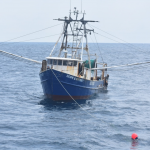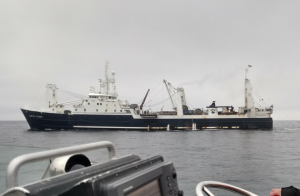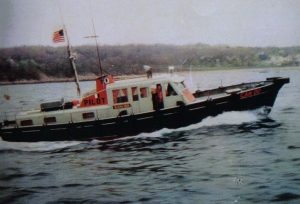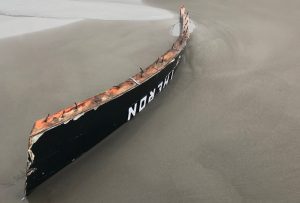Tag Archives: Chesapeake Bay Seafood Industries Association
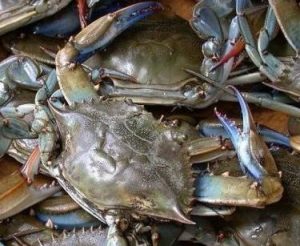
‘The seafood industry is significant to Maryland’s economy and identity’
Maryland’s seafood industry has long been the envy of markets around the country, providing more than $600 million each year to the state economy. Stone Slade, seafood marketing director for Maryland’s Department of Agriculture, said it isn’t hard to locate a “fresh catch” and the industry plays a key role in shaping the state’s identity. “The seafood industry contributes $600 million to the state’s economy, employs thousands of workers, has annual commercial landings averaging over 56 million pounds, and an annual dockside value of $95 million.” >click to read< 11:20
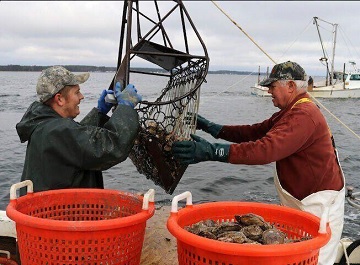
Maryland’s oyster harvest largest in 35 years
Bill Sieling, executive vice president of Chesapeake Bay Seafood Industries Association, attributes the excellent haul to both Mother Nature and the canniness of the Maryland oyster industry in putting available resources to their best use. “The combination of having the good substrate there for the young oysters to set upon and then having the oysters available in the area to produce the spawn which is what produces the spat set and therefore had a place to set and grow – and it’s as simple as that,” It takes three years for an oyster to grow to legal market size. This year’s harvest was the culmination of years of investment in the Bay’s oyster growing conditions, Sieling said. >click to read< 13:04
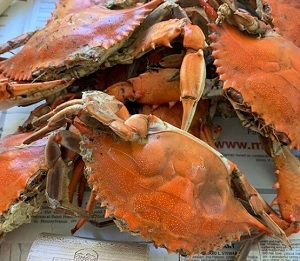
Md. crabbing industry fears long-term impacts of 2020 visa shortages – “Finding Americans that are willing to do this job, it’s not happening.”
Maryland’s famous crab industry is facing an uphill battle. With another year of visa caps, there’s a severe shortage of migrant workers to work as crab pickers ― and few Americans willing to do the job. This year, Maryland crabbers fear for the life of an industry that has been in their families for generations. Only nine crab processors ― which represent 95% of the state’s crab meat production ― remain in Maryland. The processors ― or picking houses ― rely on about 500 foreign seasonal workers to pick crabmeat each year. To work in the United States those workers need H-2B visas designated for temporary non-agricultural workers. >click to read< 18:54
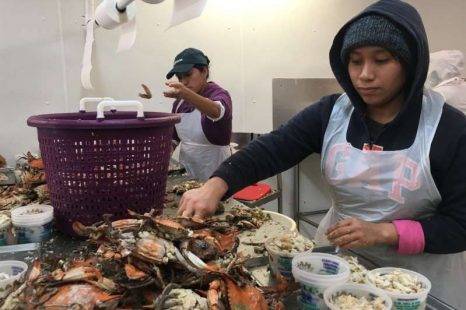
Maryland’s Crab Country: Not Enough Visas, Not Enough Workers
Music blared as 21 Mexican women methodically cracked open steamed crabs piled high inside a cool, bright room. They picked out the meat and packed it into 1-pound containers that their employer, G.W. Hall & Sons, ships to wholesalers in the mid-Atlantic and as far away as Canada. A half-mile down Old House Point Road, the picking room at a competing company, Russell Hall Seafood, was silent, no workers to be seen. Bare metal tables, normally heaped with crabs this time of year, gleamed. The difference: one firm won the visa lottery, and the other lost. “It trickles all the way down the line,” said fisherman Burl Lewis, who normally sells a large amount of menhaden to Russell Hall Seafood but recently laid off a crew member from his 52-foot boat, the Trying Times. “The Mexican labor creates jobs for Americans. It’s creating my job.” >click to read<16:49

































